
You have definitely sung, but have you ever tried to sing in a traditional way, which combines various instruments and the special vocals of performers? Visiting Vietnam to figure out this special art as the soul of Vietnam, Cheo Singing, one of the especially traditional folk art forms of Vietnam, has been closely associated with the historical developments of the country and passed down through many generations.
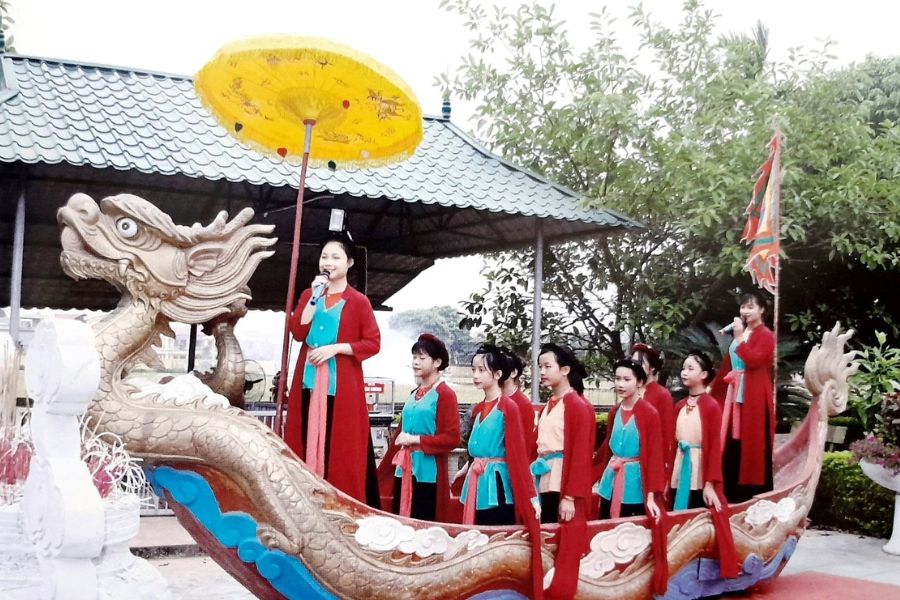
Experiencing Cheo Singing and Its Cultural Heartbeat (Source: VietnamPritorial)
Cheo singing is a traditional Vietnamese folk art form, usually performed with traditional vocals and musical instruments. Cheo singing has developed in the previous centuries and was once a popular form of entertainment for people in rural areas of Vietnam.
Cheo singing is often performed on stages, at fairs, in halls, at village temples, and even in traditional festivals. The content of Cheo singing often revolves around stories about history, customs, love, family, and the daily life of the people.
Read more: Music of the Royal Court of Hue - Cultural Treasure of the Ancient Capital
The origin of Cheo Singing is believed to have originated in northern Vietnam around the beginning of the 15th century. There, people developed an art form called “hat a dao,” which is a form of singing that combines singing, dancing, acting, and traditional music.
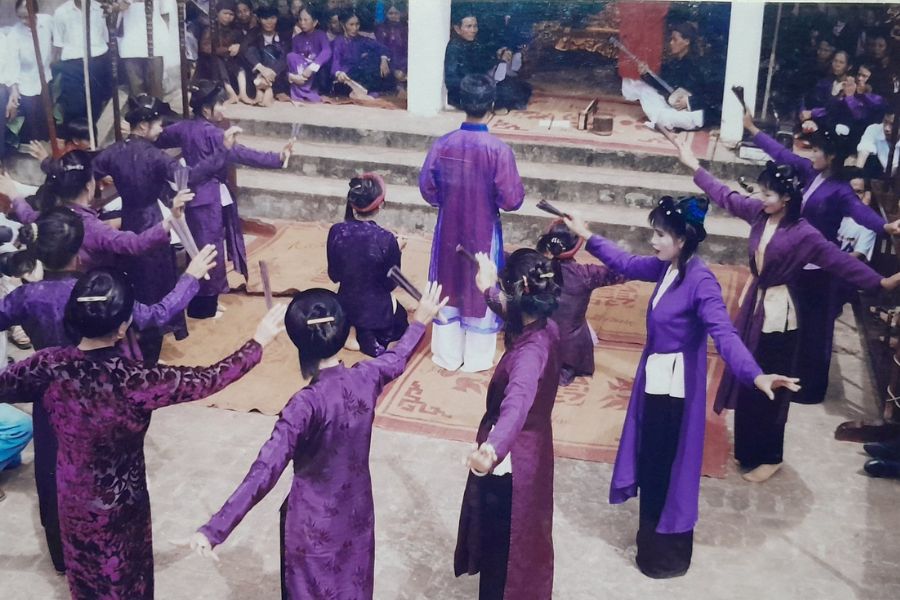
Origin of Cheo Singing (Source: sovhtt)
Later, when King Le Thai Tong ruled, a group of artists from Nghi Tam village in Tay Ho district, Hanoi, came to the palace to perform a hat a dao. King Le Thai Tong was very pleased with this form of performance and allowed the artist to perform in front of the entire court.
Since then, the art of Cheo singing began to be widely popularized in the countryside of Northern Vietnam. The performance form of Cheo singing was initially in the form of drama but then gradually changed to the main form of singing.
The art of Cheo singing has become an indispensable part of Vietnamese folk culture and has been preserved, developed, and passed down from generation to generation. Currently, Cheo singing is still performed on stages, in cultural centers, at festivals, and at important events in the country.
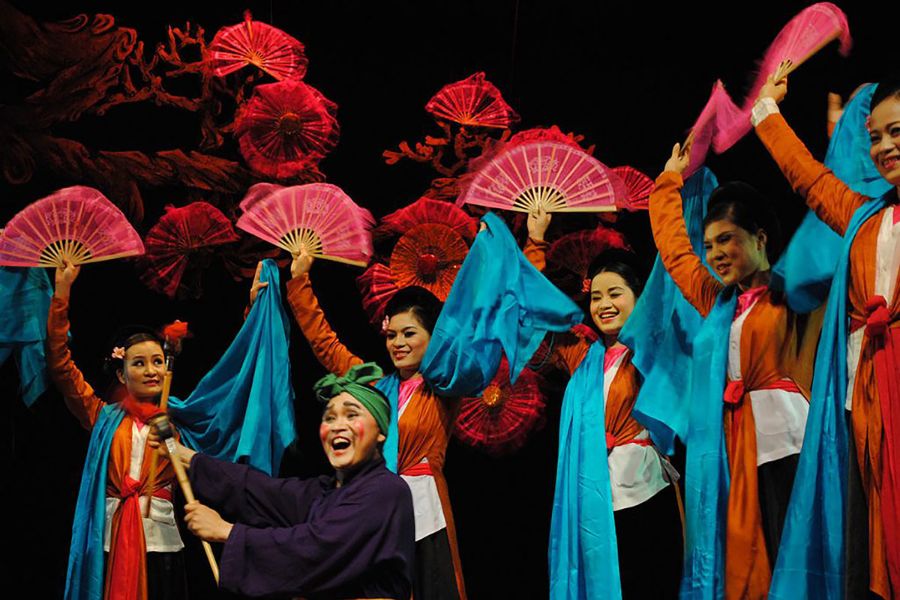
Development of Cheo Singing (Source: BaoLaoDong)
With every passing year, the art has gradually spread to the northern midland and mountainous regions and the North Central Coast. With unique artistic values, a dossier for Cheo is being compiled to seek UNESCO recognition as a cultural heritage of the world.
Cheo singing is one of the traditional folk art forms with a long history in Vietnam. Known as a stage performance art, Cheo singing is often performed at festivals, weddings, and other art performances.
Different from other folk art forms, Cheo is a form of Vietnamese traditional stage art imbued with the national characteristics of a unique combination of singing, dancing, music, and drama. Cheo is a singing style that can be solo, a duet, or a choir.
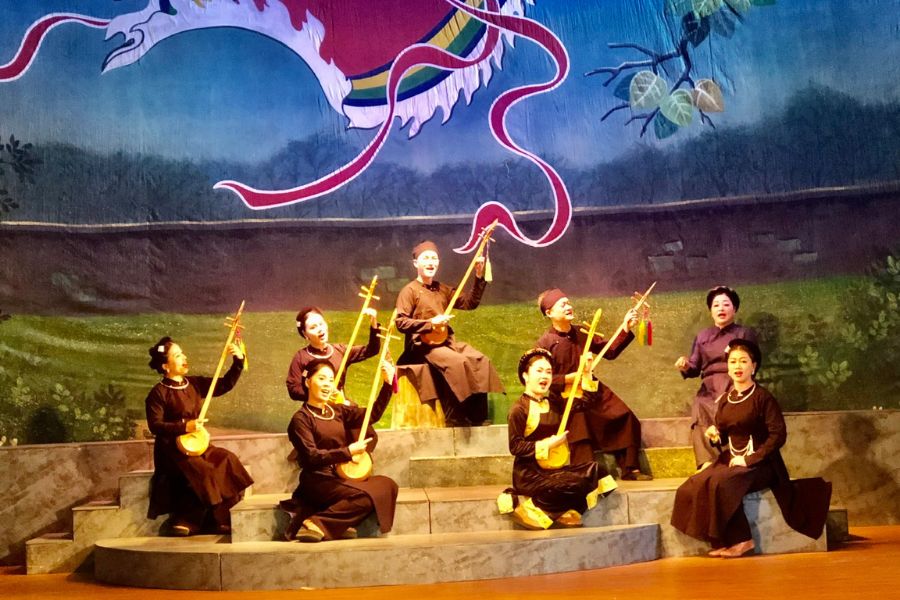
Specialties in instruments (Source: SoVHTT&DL)
The melody of Cheo plays is very suitable for the natural voice and language of the Vietnamese people. A Cheo play often lasts about 2 hours. A performance requires the artists to have the skills of singing, dancing, and performing with background music of drums, mo (wooden tocsin), sao (bamboo flute), and nhi (two double-stringed instruments).
One of the characteristics of Cheo singing is the combination of three main elements: music, acting, and dancing. Music in Cheo singing is often performed with traditional instruments such as the zither, moon lute, and drum while acting and dancing are expressed through the roles of the actors.
It can be said that Cheo singing art is a harmonious combination of the above elements to create a unique artistic product, leaving a deep impression on the audience. From emotional acting to songs with national melodies, Cheo singing contributes to embellishing the diverse cultural picture of Vietnam.

Special characteristics of Cheo Singing (Source: nguoihanoi)
In addition, a prominent feature of the art of Cheo singing is the flexibility in the way it is performed. From gentle singing and everyday storytelling to fast tempos and vibrant rhythms, Cheo singing brings diverse and rich musical experiences to the audience.
Finally, another characteristic of Cheo singing is its high sense of community. Not only is it a form of performing art on stage, but Cheo singing is also considered a community bonding activity. Through singing and performing Cheo, people can express their love and pride for their national culture while creating solidarity and attachment among members.
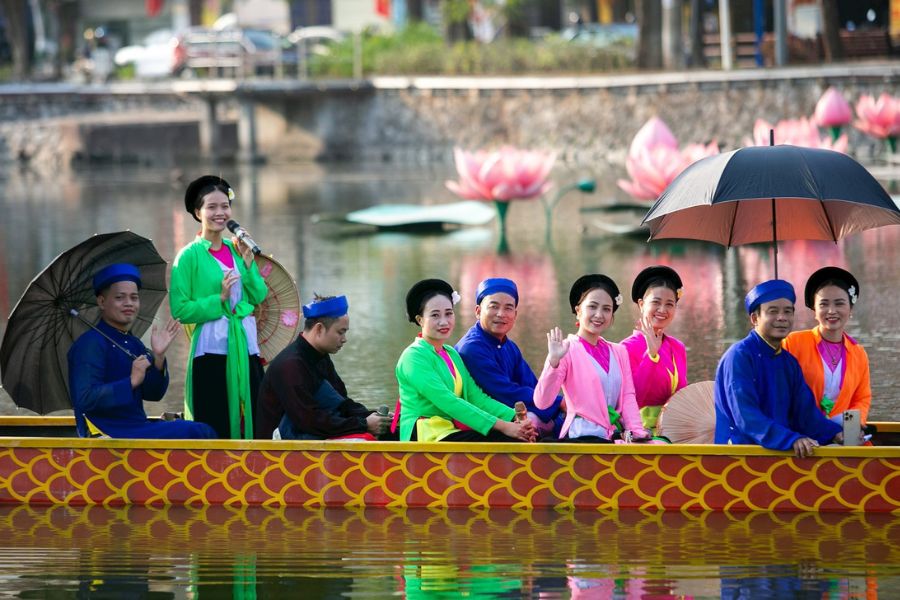
Special characteristics of Cheo Singing (Source: BaoHaiDuong)
Cheo is a traditional performing art of Vietnam, which has been spread and developed since the 11th century. Cheo has many different forms of performance, divided by performance location, acting style, style, and era. Below are some main classifications of Cheo.
This is the oldest form of Cheo performance, often held in communal houses, pagodas, or community gathering places. This type of performance has a simple style, using only a mat spread out in the yard and a small curtain hanging behind; the main props are usually fans. Because Cheo singing is performed on a mat with musicians and actors sitting around the two edges, people often call it a Cheo mat.
It is an innovative form of performance founded by Nguyen Dinh Nghi in the early 20th century. This type is often more professional, especially when the performance is composed of acts and layers without dances and stylized movements. Instead, Cheo Cai Luong infuses existing folk melodies into it, creating a new attraction.
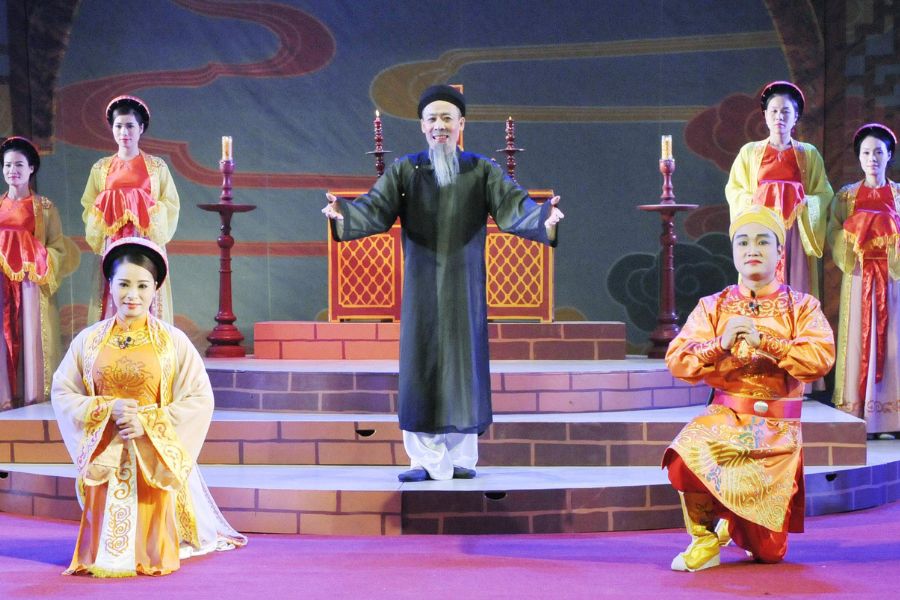
Types of Cheo Singing (Source: nhahatcailuonghanoi)
It is a development of the art of Cheo singing, often performed and sung on the full moon of the seventh lunar month every year or in death anniversaries and farewell ceremonies of the deceased. The main parts include the whip, the twenty-four filial piety, the rowing boat singing and dancing, and the ten graces. The end of the Cheo singing program is usually Quan Ho singing.
The art of modern Cheo singing began to develop when our country integrated into the world. This genre retains its national identity and introduces to the world the most beautiful and unique features of Cheo.
Facing the impact of an integrated culture, it is necessary to make a great effort to preserve and promote the values of traditional Cheo art. At present, besides the efforts of Cheo theatres to bring art to audiences through their weekly performances, the training of Cheo directors and artists is also drawing great attention.

Efforts to Make Cheo Recognized as Cultural Heritage of the World (Source: bvhttdl)
As the cradle of Cheo art in the Northern River Delta, well-known artists in Khuoc village have taught the basic skills of traditional Cheo singing to children from 6-15 years old on weekends or in the summer to keep the traditional Cheo art alive.
And recently faced with the impact of integration, efforts to preserve and promote the values of traditional Cheo art are being promoted, including the construction of a dossier to submit to UNESCO for consideration to include Cheo art in the list of representative intangible cultural heritage of humanity.
Cheo is a folk art built on literary scripts and existing ancient plots, so it has high artistic value. From the structure, the characters are told in detail in chronological order; and the characters' personalities are clearly revealed through the acting and circumstances of the story. Join Asia King Travel to discover the differences between Cheo Singing and regular singing art in Vietnam.
Read more: Discover the Magic of Quan Ho Folksongs: A Cultural Journey to Bac Ninh